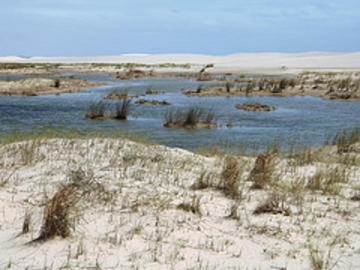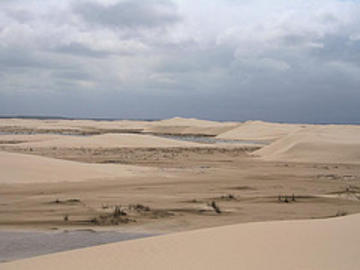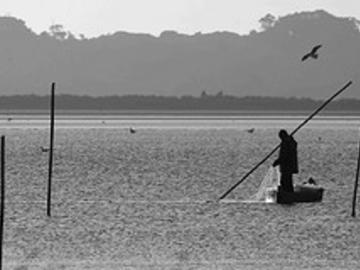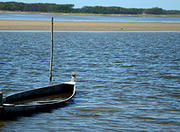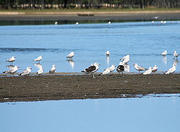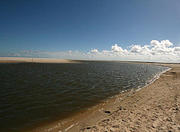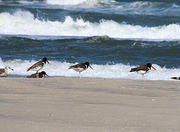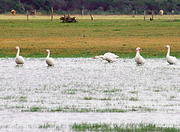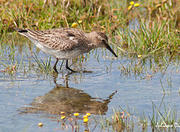Parque Nacional da Lagoa do Peixe Picture 6

More information on Parque Nacional da Lagoa do Peixe Photo by: Brazil Adventure International
Parque Nacional da Lagoa do Peixe
The Fish Lagoon National Park is located on the southern coast of Rio Grande do Sul, covering the cities of Tavares (80%), Mostardas (17%) and São José do Norte (3%). The unit has an area of 34,400 hectares and a perimeter of 138.84 km (cartographic calculation). It is administered by the Chico Mendes Institute for Biodiversity Conservation (ICMBio). The nearest towns are Tavares and Mostardas, which are distant from the state capital, Porto Alegre, 230 and 200 km respectively.
The access is done through the north from Porto Alegre, RS-040 through to Capivari (90 km - asphalt road) to South Capivari by RST-101 to mustards (120 km - asphalt road), where is the administrative headquarters of the Park (Plaza Mayor Luiz Martins No. 30, Phone: (0xx51) 3673-1464 and Fax: (xx051) 3673-1464). Hence the limits of the drive 25 km more. The nearest towns are PARNA of Tavares and mustards, which are distant from the state capital, Porto Alegre, 230 and 200 km respectively.
The Fish Lagoon - technically a lagoon, which has a communication channel with the sea during most of the year - is home to large concentrations of migratory birds from Northern Hemisphere (summer) and South (in winter), among them capororocas (coscoroba coscoroba), flamingos (Phoenicopterus ruber), cormorants, kingfishers, red-breasted, gulls, Talhami, Pirus, Pirus, terns, sandpipers and the swan-necked black (Cygnus melanocoryphus). Among the mammals there are graxains, armadillos, small rodents, and between July and October, the whales migrate to Santa Catarina. Brought by ocean currents is not rare to find in the sand sea turtles, penguins and even sea lions, according to the season. Marshes and dunes complete the attractions of the unit.
The park has no infrastructure for visitation and camping is prohibited in its area. Very interesting is the tour by the sea shore of the lagoon, near the park, where one can find traces of several shipwrecks and lighthouses that record the great danger for the sailors in this part of Rio Grande do Sul.
More Photos of Parque Nacional da Lagoa do Peixe Picture 6
